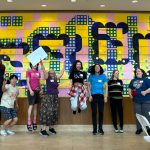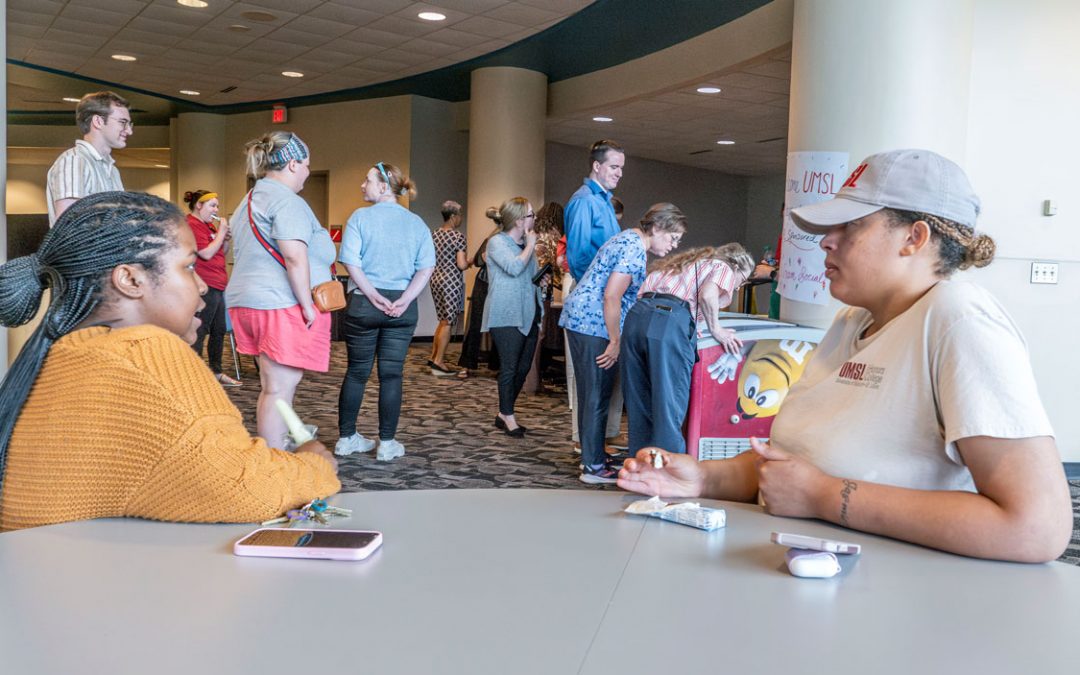
Richard Rosenfeld, a Curators’ Distinguished Professor Emeritus in the Department of Criminology and Criminal Justice, helped produce a new report titled “The Limits of Recidivism: Measuring Success After Prison” for the Naitonal Academies of Sciences, Engineering and Medicine. (Photo by August Jennewein)
Richard Rosenfeld, a Curators’ Distinguished Professor Emeritus of criminology and criminal justice at the University of Missouri–St. Louis, chaired the 12-member committee behind a new report highlighting the shortcomings of recidivism as a measure of individuals’ success after their release from prison.
The report, titled “The Limits of Recidivism: Measuring Success After Prison,” was released by the National Academies of Sciences, Engineering and Medicine at the conclusion of a study sponsored by Arnold Ventures.
Its conclusions include a recommendation that researchers develop supplementary measures to evaluate success across multiple areas of a person’s life after prison, including employment, housing, health, social support and personal well-being. The authors of the report believe that would provide a more nuanced view than current data, which takes a binary approach to measure how often individuals relapse into criminal behavior after reentering society.
Rosenfeld led a webinar last Thursday to accompany the report’s release, and he set the stage for the discussion about recidivism by pointing to several eye-popping numbers: almost 6.5 million people in the United States on probation, in jail, in prison or on parole; almost 2 million currently incarcerated; and nearly 600,000 people released from state and federal prisons each year.
“The point to be made here is not the sheer magnitude of these numbers but rather the fact that almost all of those in the correctional system and specifically in our prisons will eventually be released and returned to their communities,” Rosenfeld said. “Whether these individuals will successfully reintegrate into their communities has been identified as a critical measure of the effectiveness of our criminal legal system. But evaluating the successful reentry of individuals released from prison is challenging, particularly given limitations in currently available data and the complex and multiple factors that shape reentry experiences.”
Rosenfeld and his colleagues were tasked with examining the strengths and limitations of current measures of recidivism as well as determining news measures of positive outcomes that go beyond the negative avoidance of crime and reincarceration. They spent 10 months deliberating on those topics.
Decades of earlier research have shown that ceasing criminal activity is a process, one that might come with setbacks.
Existing recidivism rates don’t always capture indicators of progress toward the cessation of criminal activity. Those include a reduction in the seriousness of criminal activity or increases in time between release and a criminal event.
“When we talk about recidivism, what do we mean?” Rosenfeld said. “In the broadest sense, what we’re talking about is a return to criminal activity. But in terms of the measurement of recidivism, the commonly used measures referred to rearrest after release from prison, reconviction and return to prison.
“People are returned to prison for having been convicted of a crime or on the basis of having engaged in a technical violation of the conditions of their release. Technical violations need not and often do not involve criminal activity but simply violating the rules under which persons under community supervision live, for example, failing a drug test, not showing up to a meeting on time and so on.”
In their report, Rosenfeld and his colleagues suggest researchers should supplement current recidivism rates with additional measures that show whether individuals are moving away from crime.
They recommend that new measures of post-release success should take into account a variety of additional factors, including personal well-being, education, employment, housing, family and social supports, health, civic and community engagement and legal involvement.
Their report further calls for the development of national standards for measuring post-release success, creating data that is easier to compare across programs and jurisdictions.
It suggests federal agencies, including the National Institute of Justice, Bureau of Justice Statistics, Bureau of Justice Assistance, and National Institutes of Health, could convene research panels to assess new measures of post-release success and that those agencies could also solicit grant proposals from researchers and practitioners who work with formerly incarcerated people to review new measures.
Furthermore, the committee believes there should be an effort to develop new ways to measure barriers to and facilitators of post-release success. These could help improve understanding how well prisons and reentry supervision are serving their intended rehabilitative function as well as establish best practices to follow.
Committee member Jennifer Cobbina-Dungy, an UMSL alumna now serving as an associate professor in the School of Criminal Justice at Michigan State University, noted that systemic disparities exist along lines of race, socioeconomic status and geography as it relates to access to needed services and supports.
“The choices that an individual makes both in prison and after release really plays a pivotal role in post-release outcomes as the listening sessions with formerly incarcerated individuals made quite clear,” Cobbina-Dungy said during last week’s webinar. “But an individual’s range of choices is shaped by the environment into which they are released, and it can be expanded or constrained by the opportunities or barriers to which they are exposed.”














